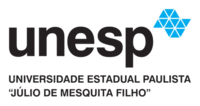Difficulties of mouth-breathing students in the solution of additive mathematical problems
DOI:
https://doi.org/10.18675/1981-8106.vol25.n48.p129-149Keywords:
Mouth-breathin, Additive problems, Attention difficulties.Abstract
Twenty-six mouth-breathing students and their 42 class mates from the third stage of a lower junior school were evaluated in a solution task involving 13 additive problems. Task performance of mouth-breathing students was lower than that by class colleagues (Paired t-Test, p< 0.00). Intergroup analysis revealed that the proportion of attention mistakes by mouth-breathing students (30.13%) was higher than that of class mates (18.90%; Test for Comparison of Two Proportions, p< 0.00). Mouth-breathing students performed similar proportions of attention and interpretation mistakes (Exact Binomial Test, p< 0.25), whereas their colleagues made more interpretation than attention mistakes (p< 0.00). Attention and interpretation difficulties were the main factors that made mouth-breathing students to commit mistakes, at an average of 66% of the problems. Interpretation difficulty in addition situations was the main factor that made their class mates to commit mistakes, at an average of 43% of the problems. Since early treatment of mouth-breathing may hinder losses in development and learning, it is highly relevant that the teacher counsels the parents of mouth-breathing children to seek expert help.Downloads
Additional Files
Published
How to Cite
Issue
Section
License
Authors who publish in this journal agree to the following terms:
a) Authors assign copyright to the journal, with the work simultaneously licensed under the Creative Commons Attribution License that allows sharing of the work with acknowledgment of authorship and publication in this journal.
b) The policy adopted by the Editorial Committee is to assign copyright only after a period of 30 months from the date of publication of the article. After this time, authors interested in publishing the same text in another work must send a letter to the Editorial Committee requesting the release of the assignment of copyright and wait for a response.
c) This journal provides public access to all its content, since this allows greater visibility and reach of published articles and reviews. For more information on this approach, visit the Public Knowledge Project, a project that developed this system to improve the academic and public quality of research, by distributing OJS as well as other software to support the public access publication system to academic sources. The names and email addresses on this website will be used exclusively for the purposes of the journal and will not be available for other purposes. This journal provides open any other party  This work is licensed under a Creative Commons License
This work is licensed under a Creative Commons License










